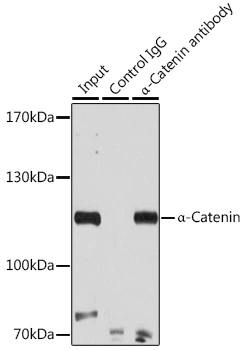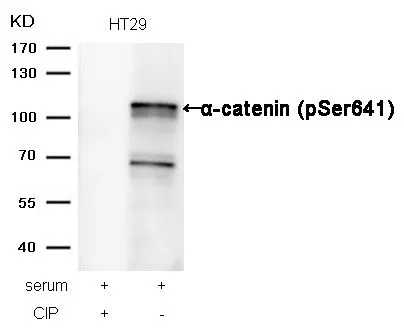alpha 1 Catenin antibody [N3C2], Internal
GTX111095
ApplicationsImmunoFluorescence, Western Blot, ImmunoCytoChemistry, ImmunoHistoChemistry, ImmunoHistoChemistry Frozen, ImmunoHistoChemistry Paraffin
Product group Antibodies
TargetCTNNA1
Overview
- SupplierGeneTex
- Product Namealpha 1 Catenin antibody [N3C2], Internal
- Delivery Days Customer9
- Application Supplier NoteWB: 1:1000-1:10000. ICC/IF: 1:100-1:1000. IHC-P: 1:100-1:1000. *Optimal dilutions/concentrations should be determined by the researcher.Not tested in other applications.
- ApplicationsImmunoFluorescence, Western Blot, ImmunoCytoChemistry, ImmunoHistoChemistry, ImmunoHistoChemistry Frozen, ImmunoHistoChemistry Paraffin
- CertificationResearch Use Only
- ClonalityPolyclonal
- Concentration0.87 mg/ml
- ConjugateUnconjugated
- Gene ID1495
- Target nameCTNNA1
- Target descriptioncatenin alpha 1
- Target synonymsCAP102, MDBS2, MDPT2, catenin alpha-1, alpha-E-catenin, catenin (cadherin-associated protein), alpha 1, 102kDa, epididymis secretory sperm binding protein, renal carcinoma antigen NY-REN-13
- HostRabbit
- IsotypeIgG
- Protein IDP35221
- Protein NameCatenin alpha-1
- Scientific DescriptionAssociates with the cytoplasmic domain of a variety of cadherins. The association of catenins to cadherins produces a complex which is linked to the actin filament network, and which seems to be of primary importance for cadherins cell-adhesion properties. Can associate with both E- and N-cadherins. Originally believed to be a stable component of E-cadherin/catenin adhesion complexes and to mediate the linkage of cadherins to the actin cytoskeleton at adherens junctions. In contrast, cortical actin was found to be much more dynamic than E-cadherin/catenin complexes and CTNNA1 was shown not to bind to F-actin when assembled in the complex suggesting a different linkage between actin and adherence junctions components. The homodimeric form may regulate actin filament assembly and inhibit actin branching by competing with the Arp2/3 complex for binding to actin filaments. May play a crucial role in cell differentiation.
- Storage Instruction-20°C or -80°C,2°C to 8°C
- UNSPSC12352203

![WB analysis of 25 ug of Hela (lane 1), A431 (lane 2) and mouse brain (lane 3) using GTX17259 alpha Catenin antibody [1G5]. Dilution : 1:500](https://www.genetex.com/upload/website/prouct_img/normal/GTX17259/GTX17259_1552_WB_w_23060620_354.webp)




